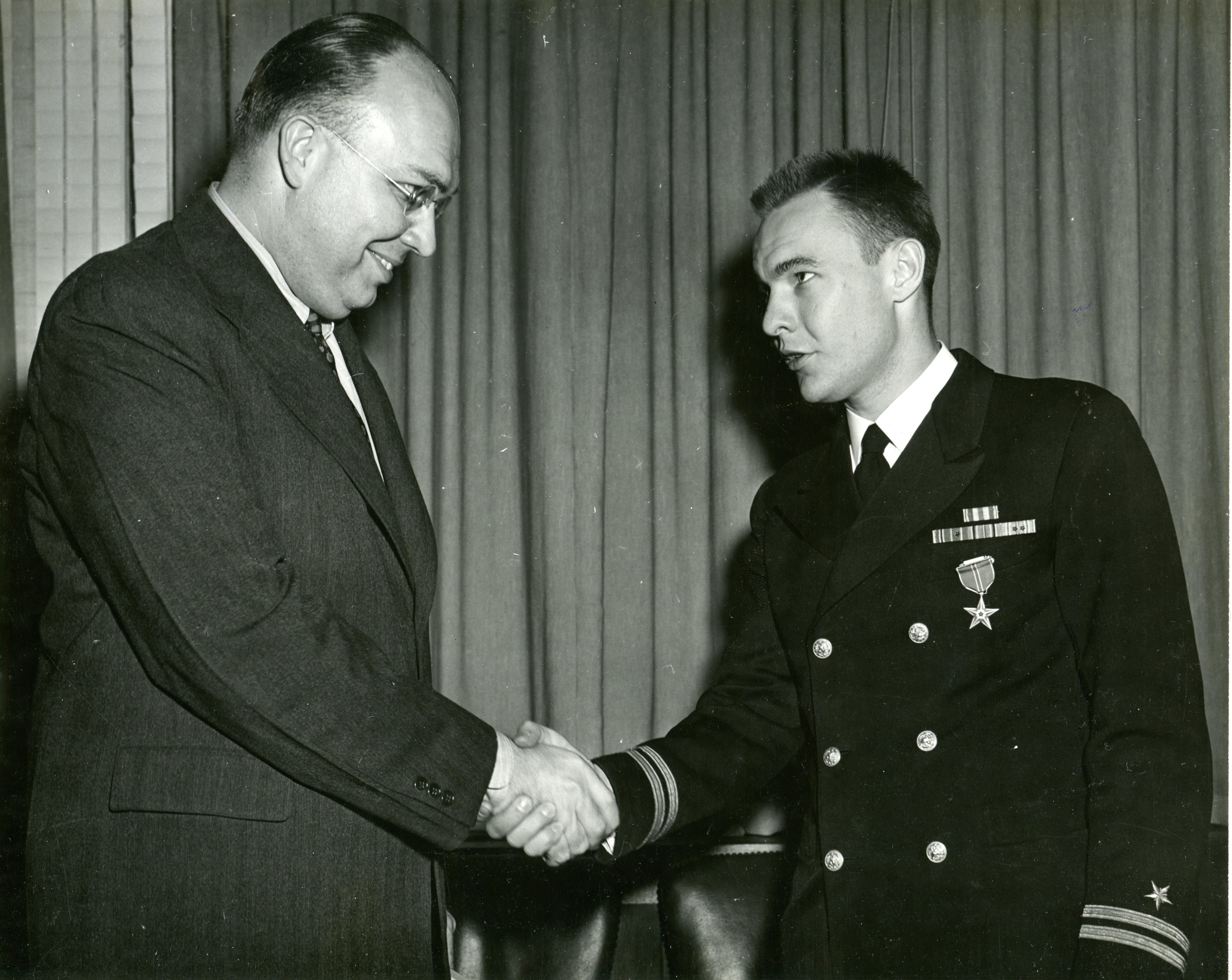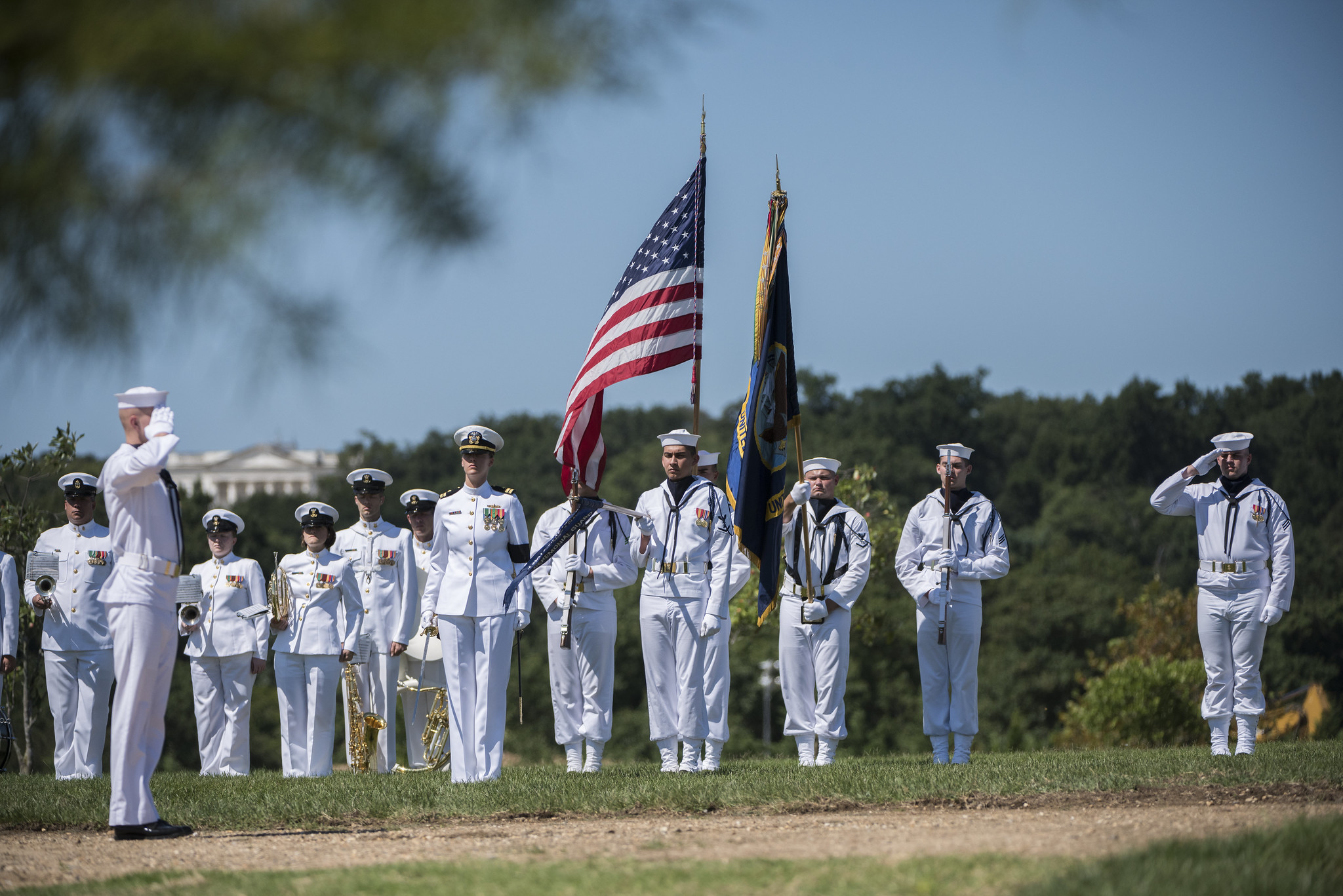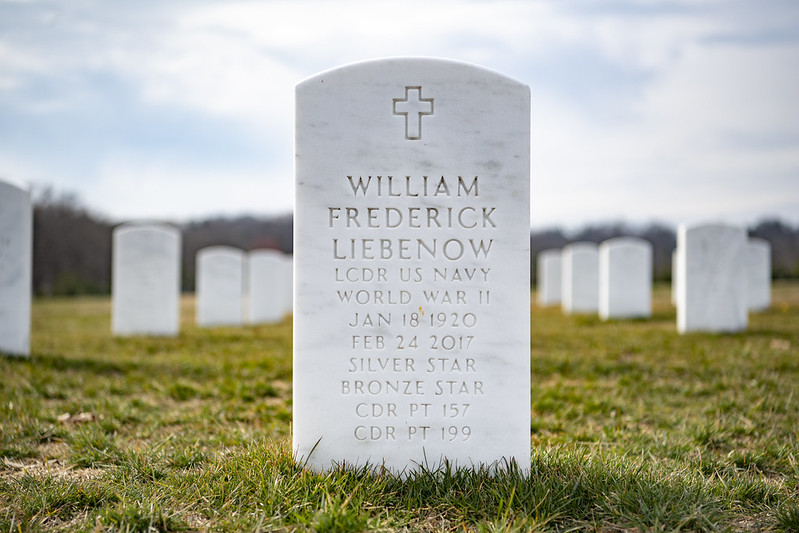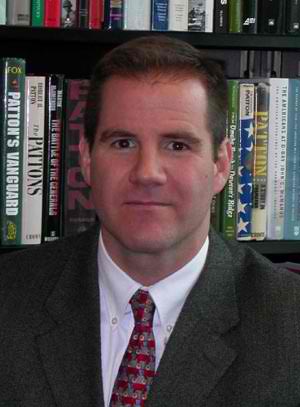Without William F. Liebenow, there might not have been a President John F. Kennedy. Today, thousands of people make a pilgrimage to Kennedy’s grave at Arlington National Cemetery, while few people visit the simple headstone that marks Liebenow’s grave in nearby Section 62.
During World War II, Liebenow and Kennedy commanded patrol boats (PTs) together in the South Pacific’s Solomon Islands. After Kennedy and his crew of PT-109 collided with a Japanese destroyer on August 2, 1943, off Plum Pudding Island, it was Liebenow who rescued the survivors six days later.
Liebenow, from Fredericksburg, Virginia, first learned of Kennedy’s run-in with the destroyer at a morning briefing on Rendova Island, when a briefer explained that PT-109 was lost and the crew dead. The report was inaccurate. The Japanese destroyer Amagiri had split PT-109 in half, killing two sailors and badly burning two others. But 11 men survived, and Kennedy led them, with one wounded man on his back, to Plum Pudding Island, a three-and-a-half-mile swim.

On August 7, Liebenow read a message carved on a coconut delivered by two island natives. It read: “NARU ISLAND. NATIVE KNOW POSIT. HE CAN PILOT. 11 ALIVE. NEED SMALL BOAT. KENNEDY.” Liebenow’s commanders suspected a Japanese trick, but they decided to send him out in PT-157 with the two islanders to find Kennedy.
Liebenow’s commanders told him to fire four shots into the air when he arrived at the rendezvous location. Kennedy would respond with four of his own. As Kennedy boarded a canoe to meet Liebenow, he realized he had only three bullets in his pistol. To solve the problem, he borrowed a Japanese rifle from one of the coastwatchers. When the rowers reached the specified destination and heard Liebenow’s engines, they stopped. Liebenow fired his four shots into the air. Kennedy, in return, fired off the last three bullets from his pistol, then picked up the rifle and fired a single round. The recoil on the unfamiliar weapon almost toppled him into the water, but he caught his balance. “Hey, Jack!” someone called to him as Liebenow’s crew pulled him onboard. Then, with Kennedy’s direction, Lienenow picked up the rest of PT-109’s survivors.

After the war, Liebenow kept in touch with Kennedy, but was surprised when he learned his fellow captain was running for president in the 1960 election. Liebenow rode with Kennedy in a parade in Grand Rapids, Michigan, and joined him for a whistle-stop tour. Along the way, Kennedy told him, “Lieb, if I get the votes from everybody that claims to have been on your boat that night of the pickup, I’ll win this election easy.” The story of PT-109 helped propel Kennedy into the White House. The two men remained friends until Kennedy’s assassination on November 22, 1963.
The U.S. Navy laid Liebenow to rest with military funeral honors with funeral escort on August 23, 2018—down the hill from his friend and president, whom he rescued some 75 years earlier.

TO LEARN MORE
- PT 109: John F. Kennedy in World War II by Robert J. Donovan
- William F. “Bud” Liebenow Oral History Interview from the John F. Kennedy Library, https://www.jfklibrary.org/sites/default/files/archives/JFKOH/Liebenow%2C%20William%20F/JFKOH-WFL-01/JFKOH-WFL-01-TR.pdf
PHOTO CAPTION 1: Lieutenant William F. Liebenow receives the Bronze Star Medal from the Navy’s Assistant Secretary, H. Struve Hansel, in Washington, D.C., on April 3, 1945. Liebenow rescued a young John F. Kennedy after a Japanese destroyer struck his patrol boat in the Solomon Islands in August 1943. (Credit: U.S. Navy)
PHOTO CAPTION 2: Sailors from the U.S. Navy Ceremonial Guard and the U.S. Navy Band conduct the full honors funeral of Lieutenant Commander William Liebenow in Section 62, on August 23, 2018. (Credit: U.S. Army photo by Elizabeth Fraser/Arlington National Cemetery/released)
Author: Kevin Hymel
